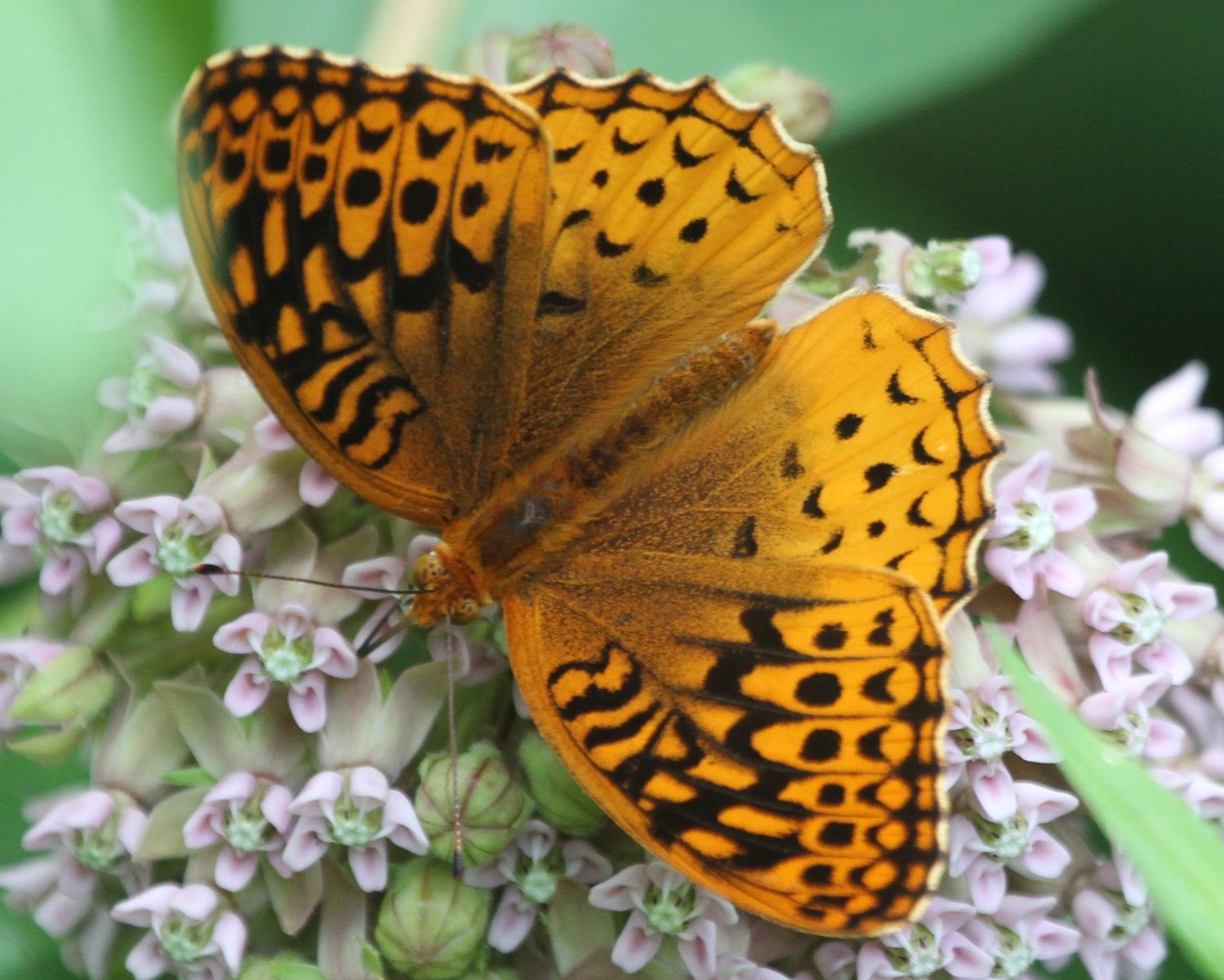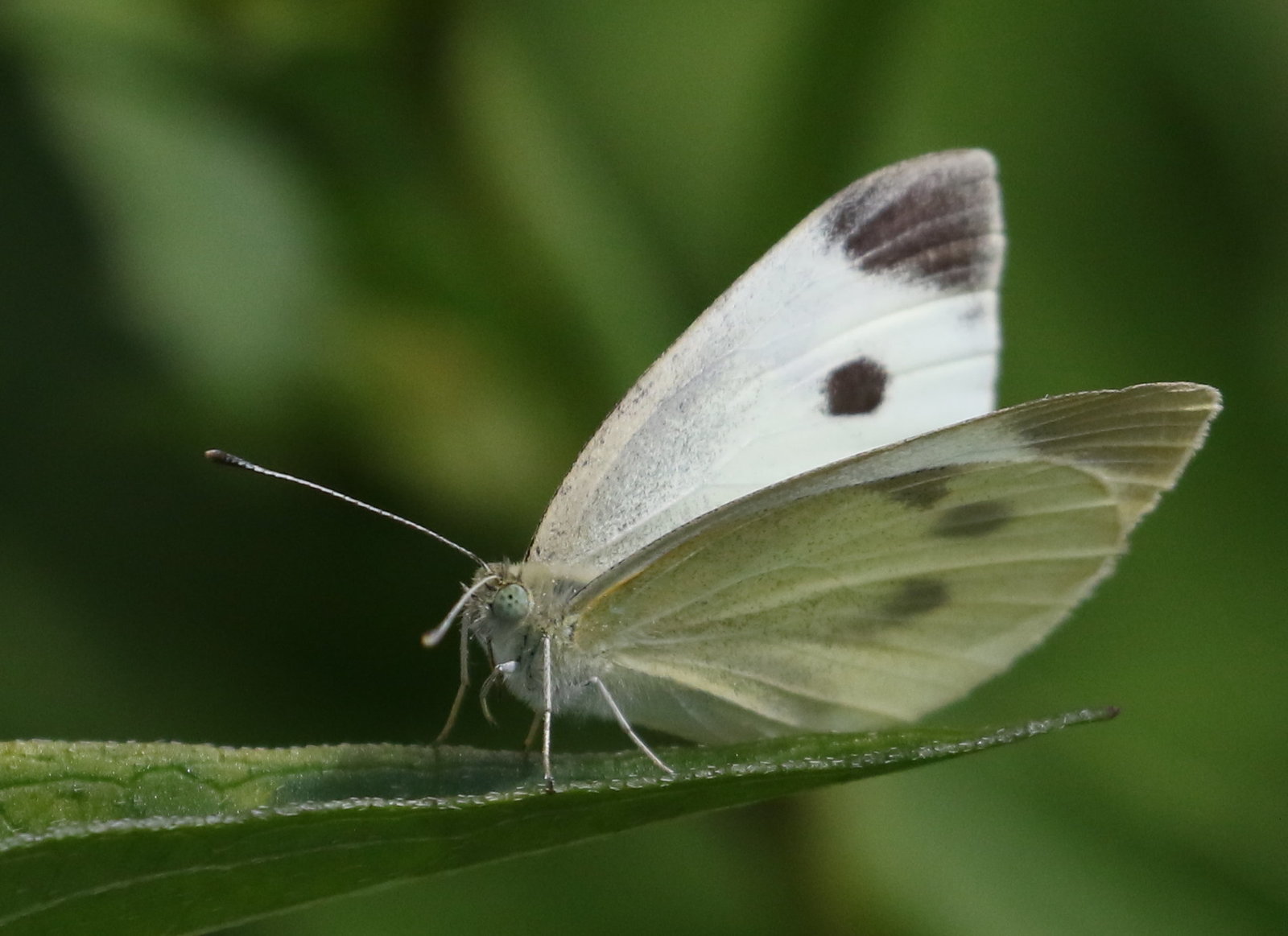
Great spangled fritillary, photographed by Brian Johnson in SAL on June 12, 2017 — our first report of that species for the year.
As of March 6, 2018, our “un-butterfly” weather continues. It has been so regularly cold, windy, rainy, icy, snowy, or all of the above that we have records for flying butterflies on only three days so far this year: Feb 20 (seven reports), Feb 27 (one report), and Feb 28 (two reports).
Maybe we can change the topic and take heart by reflecting on 2017.
Last year was a good one for us. Among other positive news:
- 93 (or 94?) species were recorded, our best total since 2013;
- a great purple hairstreak, a totally-unexpected species, was added to our all-time list;
- an apparent southern broken-dash was found for the second year running (= the 94th? species above);
- Brazilian skipper was found for only the fourth year of our ten, and for the first time since 2014;
- sleepy orange was documented in larger numbers than ever, with sightings from June into November — and solid evidence of breeding;
- cloudless sulphur continued to strengthen its toe-hold in South Jersey, becoming more and more expected as a breeder, it seems, each year — with eggs, cats, and chrysalids all found by multiple observers (in CMY County, at least);
- another sulphur, little yellow, was recorded for the fourth year in a row and seems to have moved into the “expected southern wanderer” group, joining long-tailed skipper, Ocola skipper, and others;
- Georgia satyr was recorded in good numbers again and in two different counties (BUR and ATL);
- great spangled fritillary was found in four different counties, SAL, GLO, CUM and CMY (where it is especially rare);
- the “three-spotted” cabbage white, a previously little-known or unknown form, became something to look for (Can we find more 3-spotted cabbage whites?)
- orange sulphur flew to the last week of the year;
- and lots else.

The not-yet-recognized “Tomlinsonian” form of Pieris rapae? One of at least eight “three-spotted” cabbage whites photo’d by Harvey T at several sites through summer, 2017.
On the darker side:
- Leonard’s skipper went unrecorded for the fifth year in a row;
- hoary-edged skipper also went unrecorded for the fifth year in a row (and apparently no member of our group has photographed that species in South Jersey in the ten years of our log’s existence);
- Arogos skipper went unrecorded for the ninth year in a row;
- oak hairstreak went unrecorded for the fourth year in a row;
- two-spotted skipper was found at only two sites for a total of only seven individuals;
- cobweb skipper was recorded in only five reports and for a total of only six individuals (with four of the reports from the same spot in Warren Grove).
- dotted skipper was found only at a single site (and not at Parker Preserve, once a place to find it).
Here’s the spreadsheet for Early and Late Dates through 2017. Click the + button for easier viewing.
Also added here is the updated “55 Species You Can Find in South Jersey” checklist you can pass along to any birder, botanist, or beginning butterflyer you come upon to help get her or him started. We could use some younger observers especially.
Fifty-Five BFs To Find In South Jersey
Keep exploring, everyone!
Jack Connor

